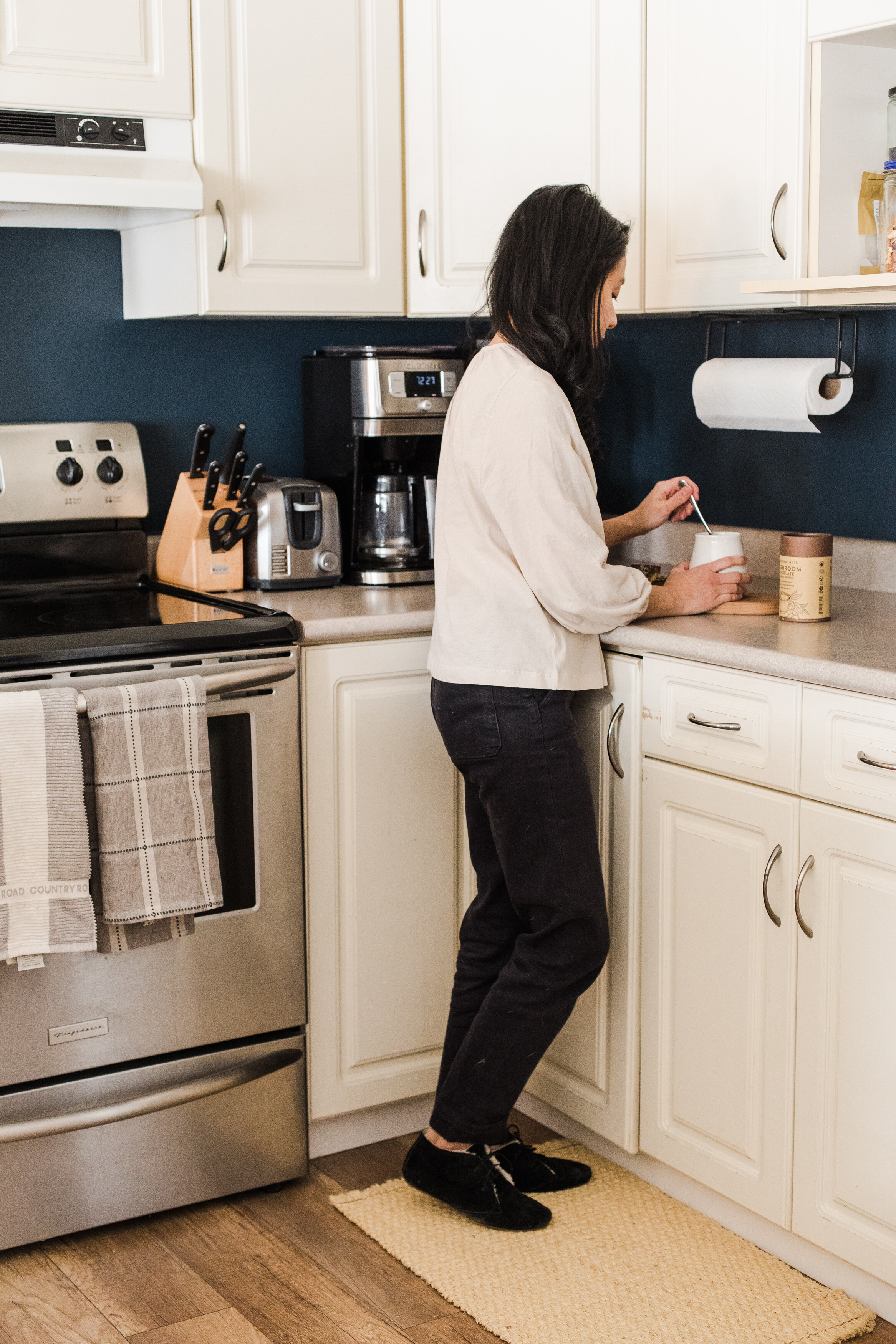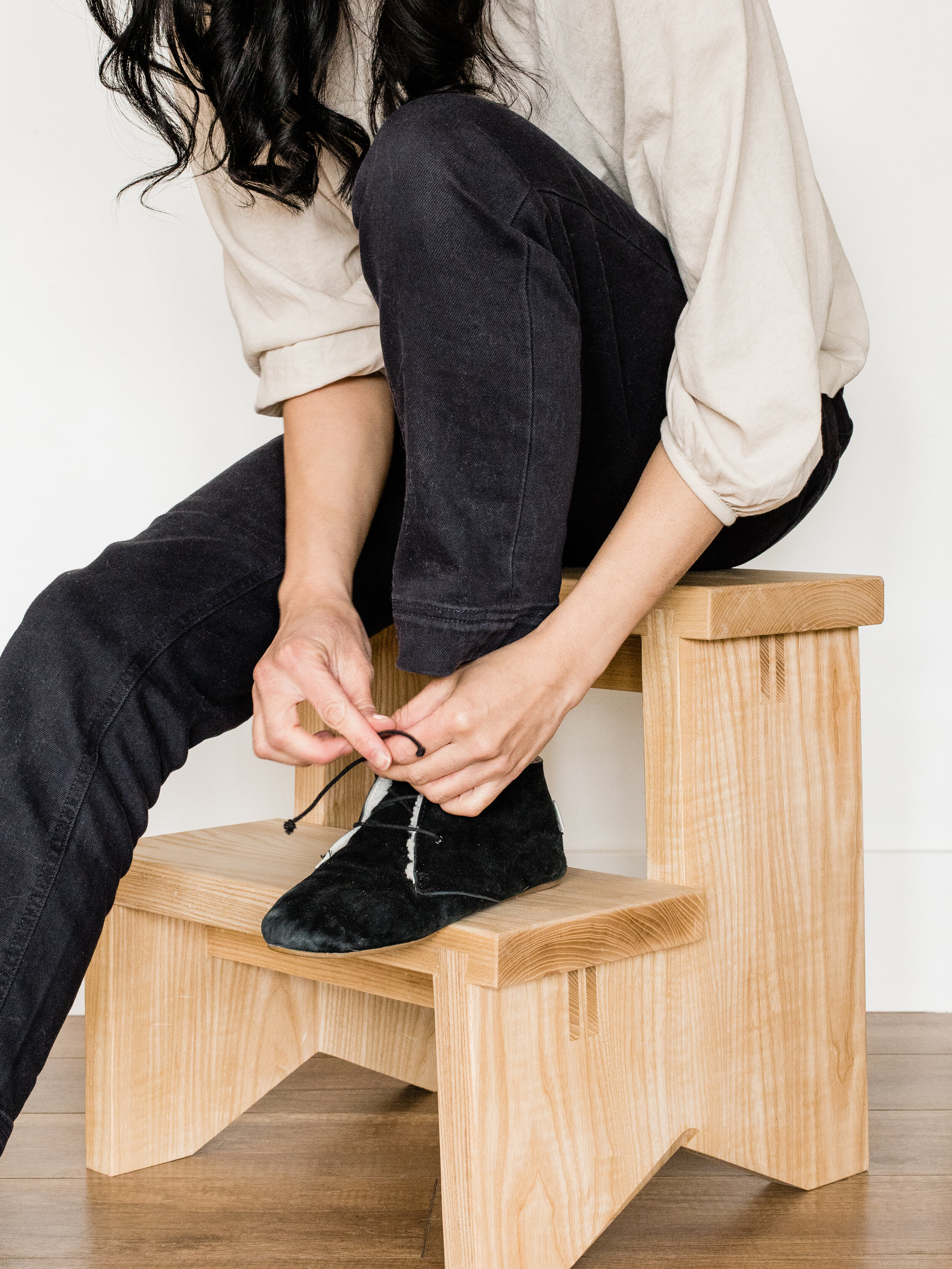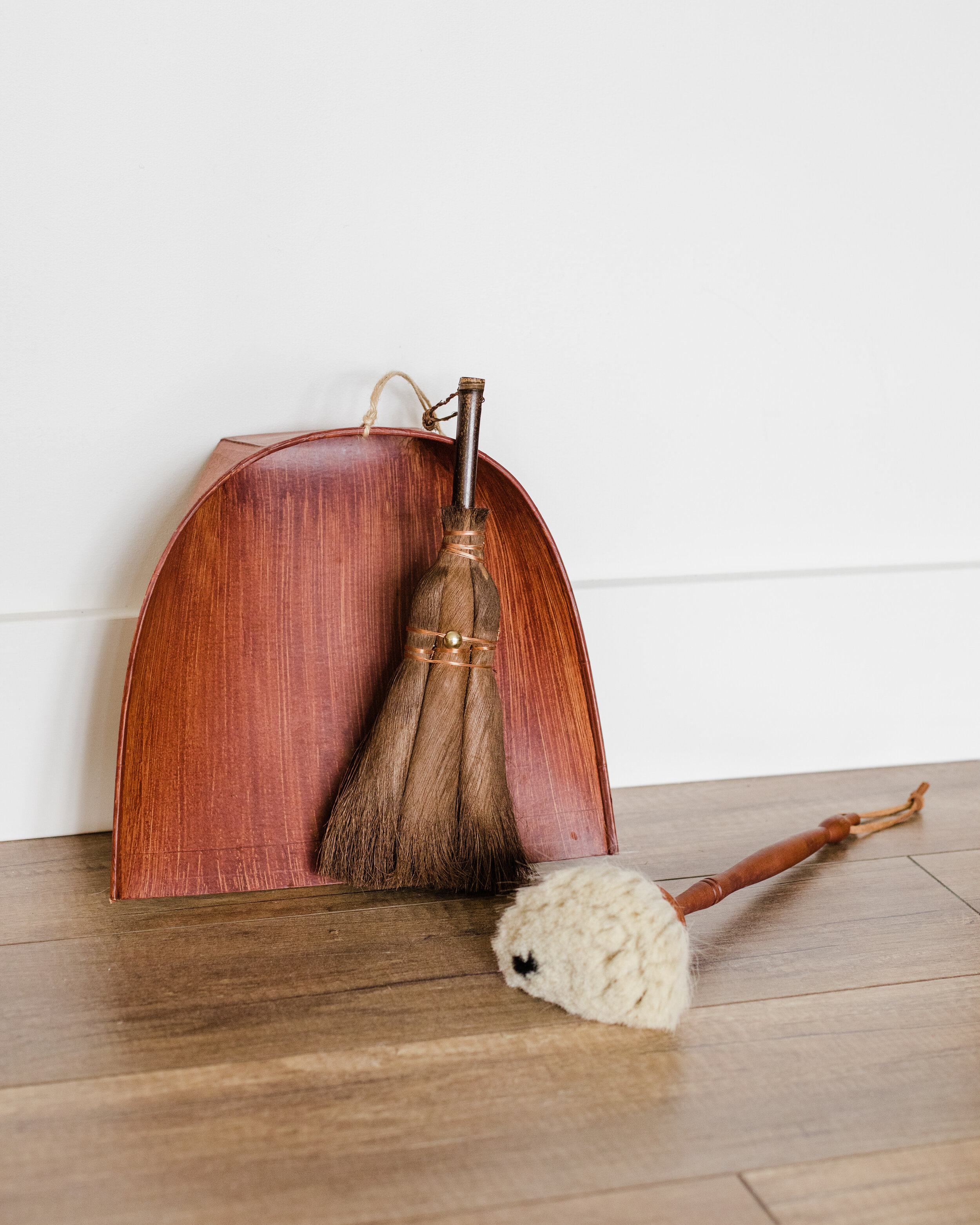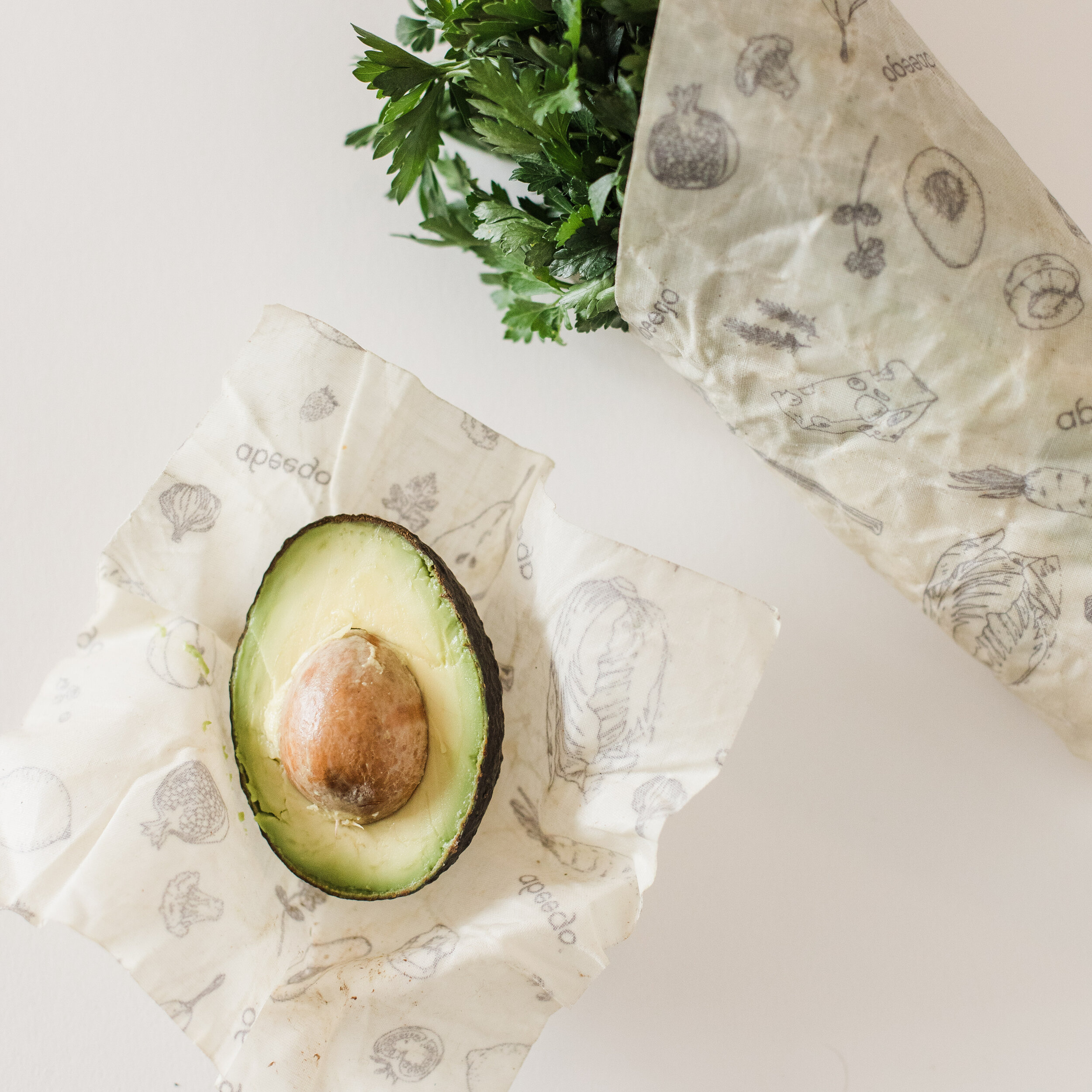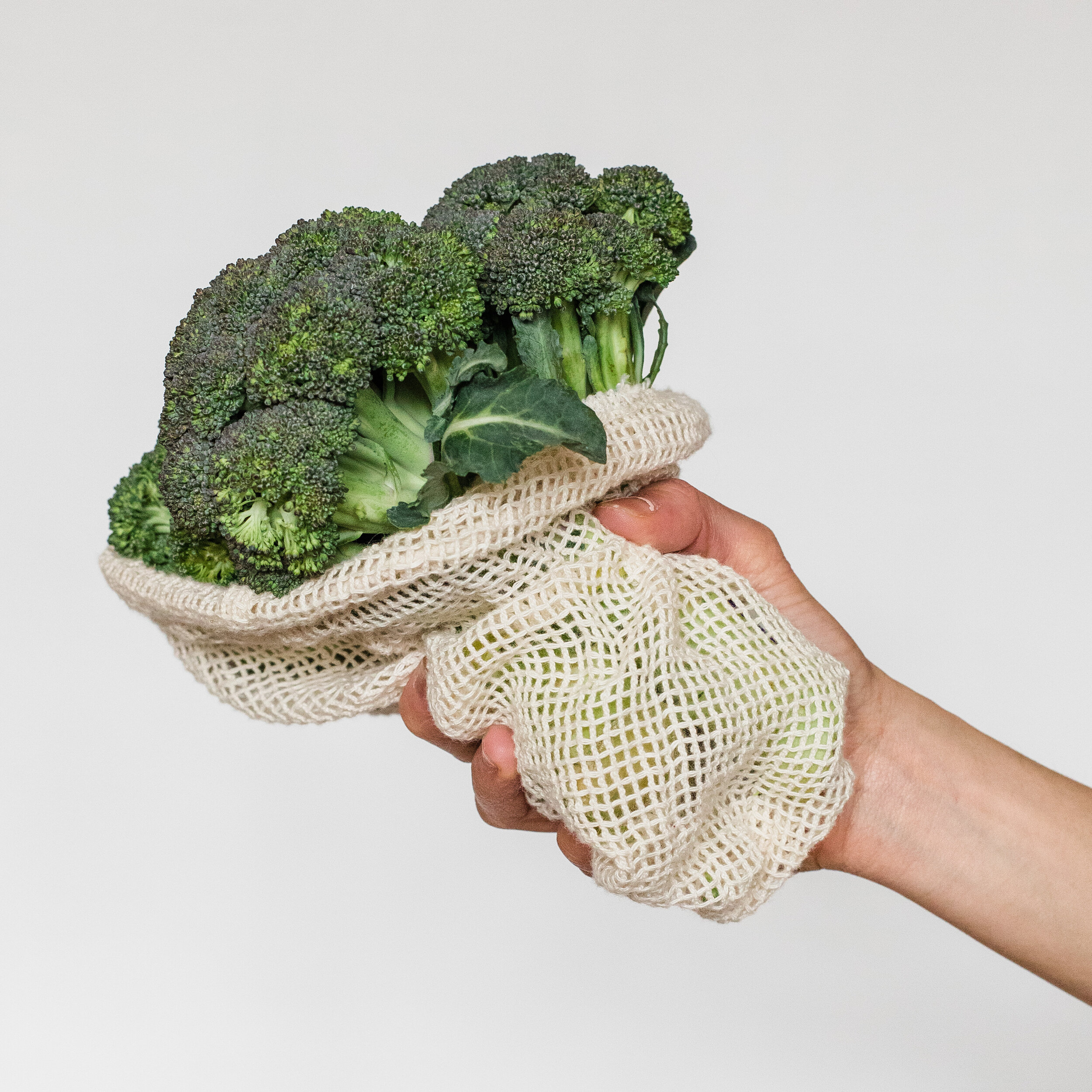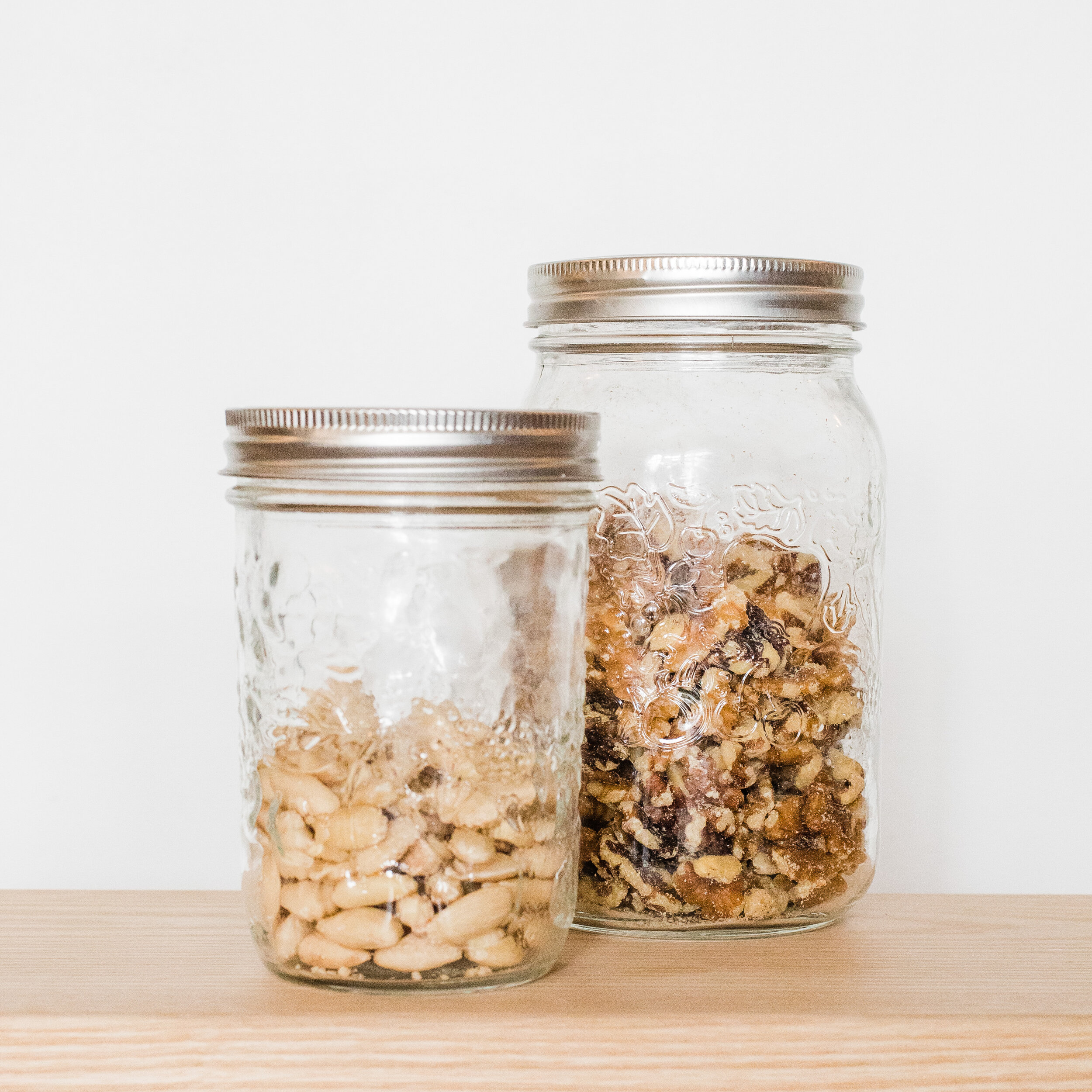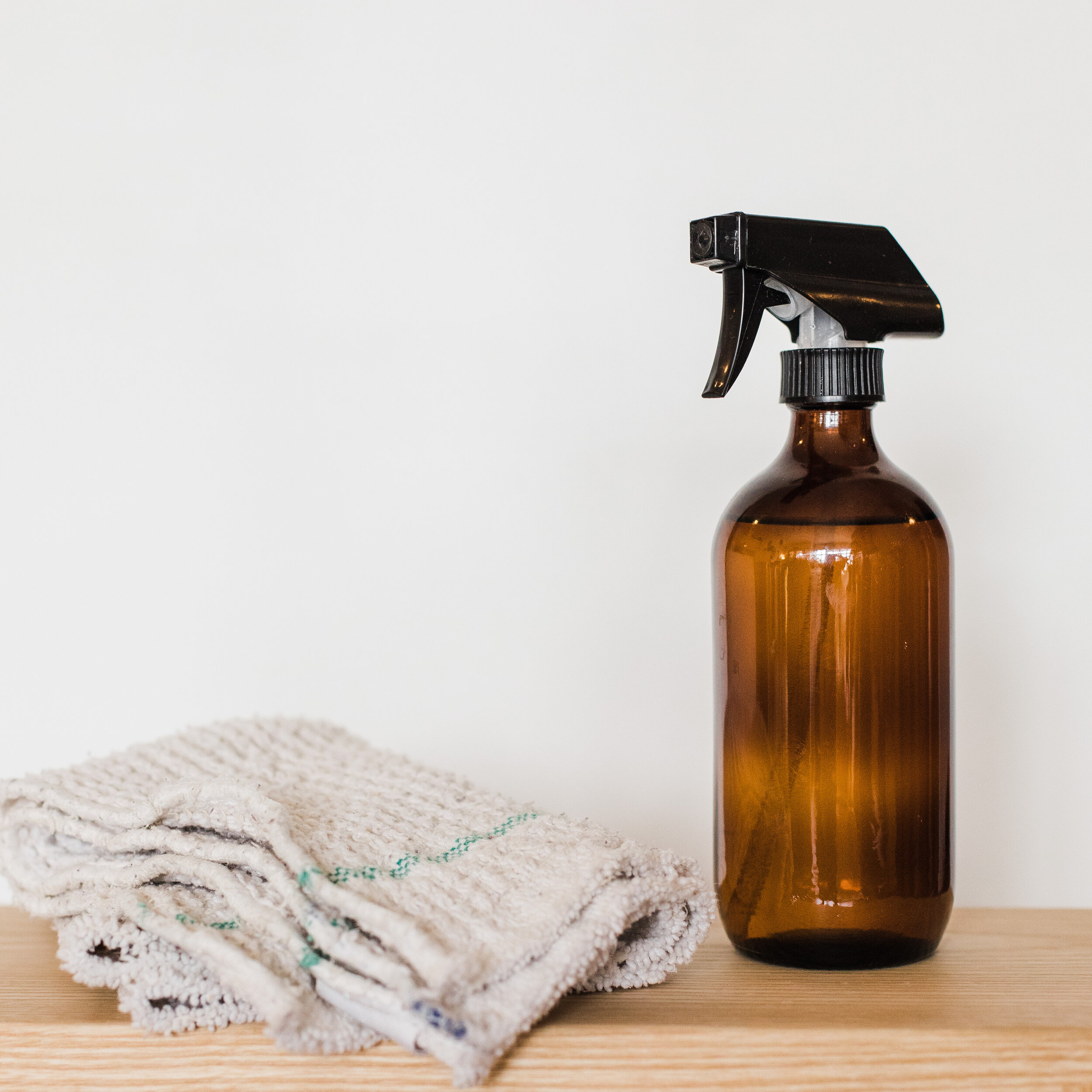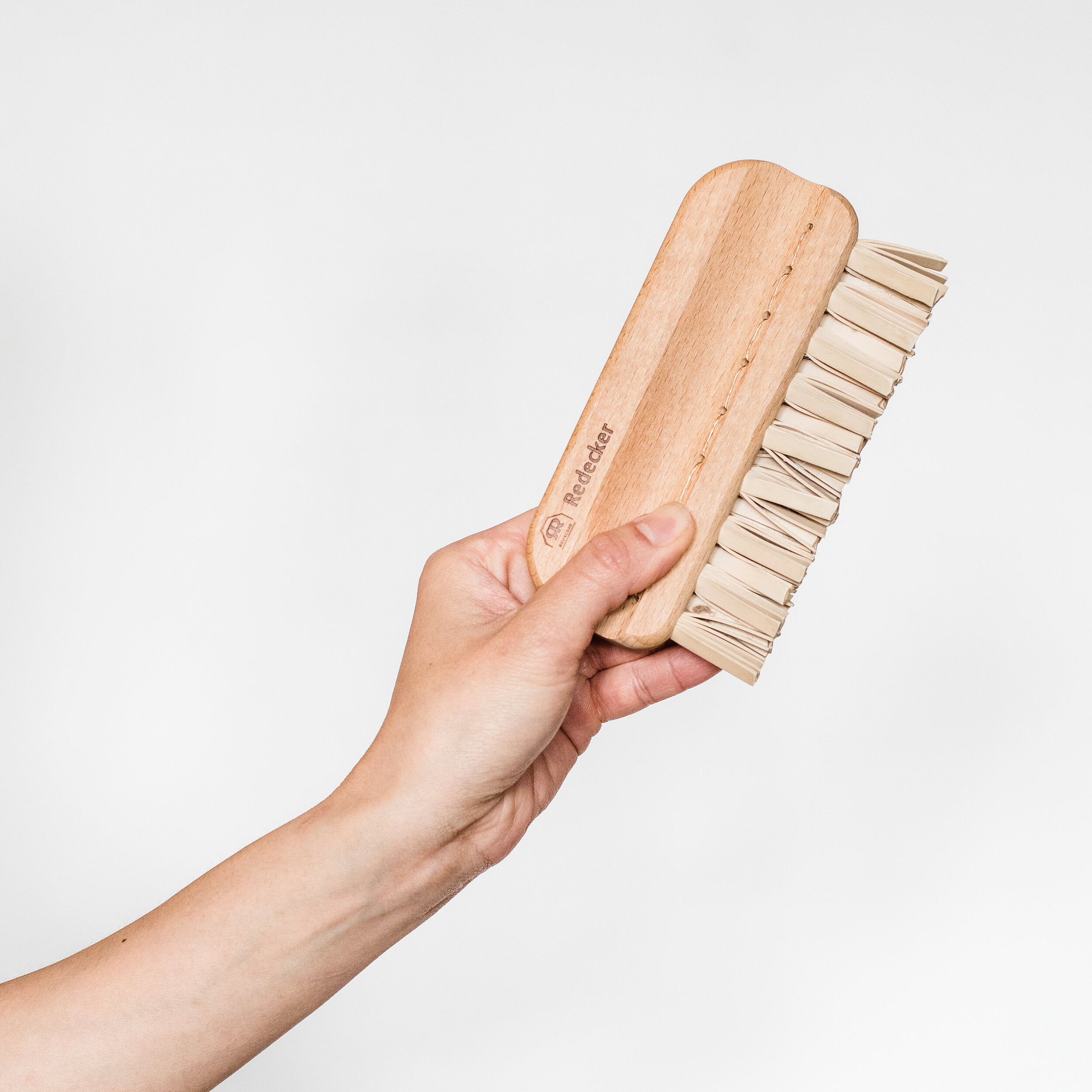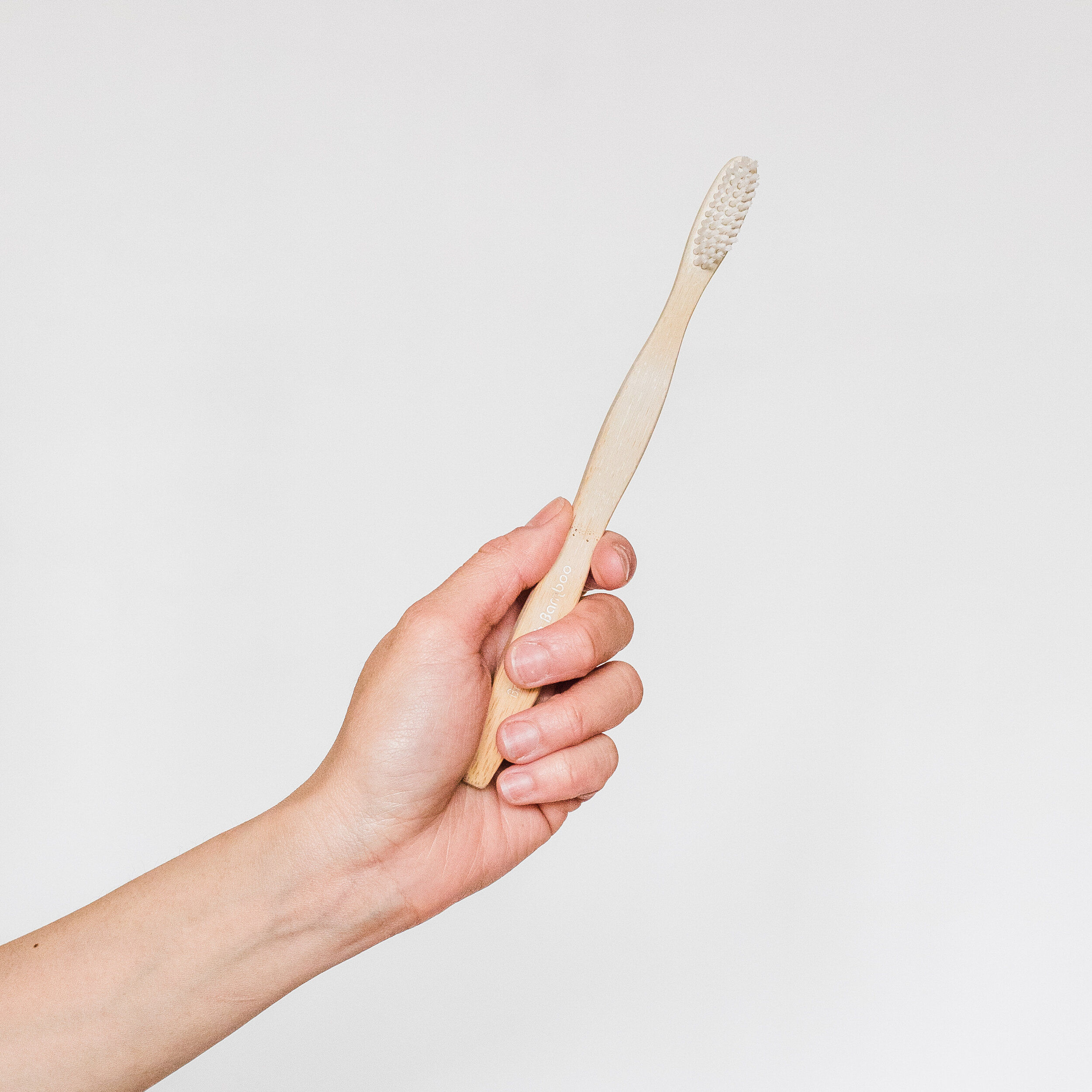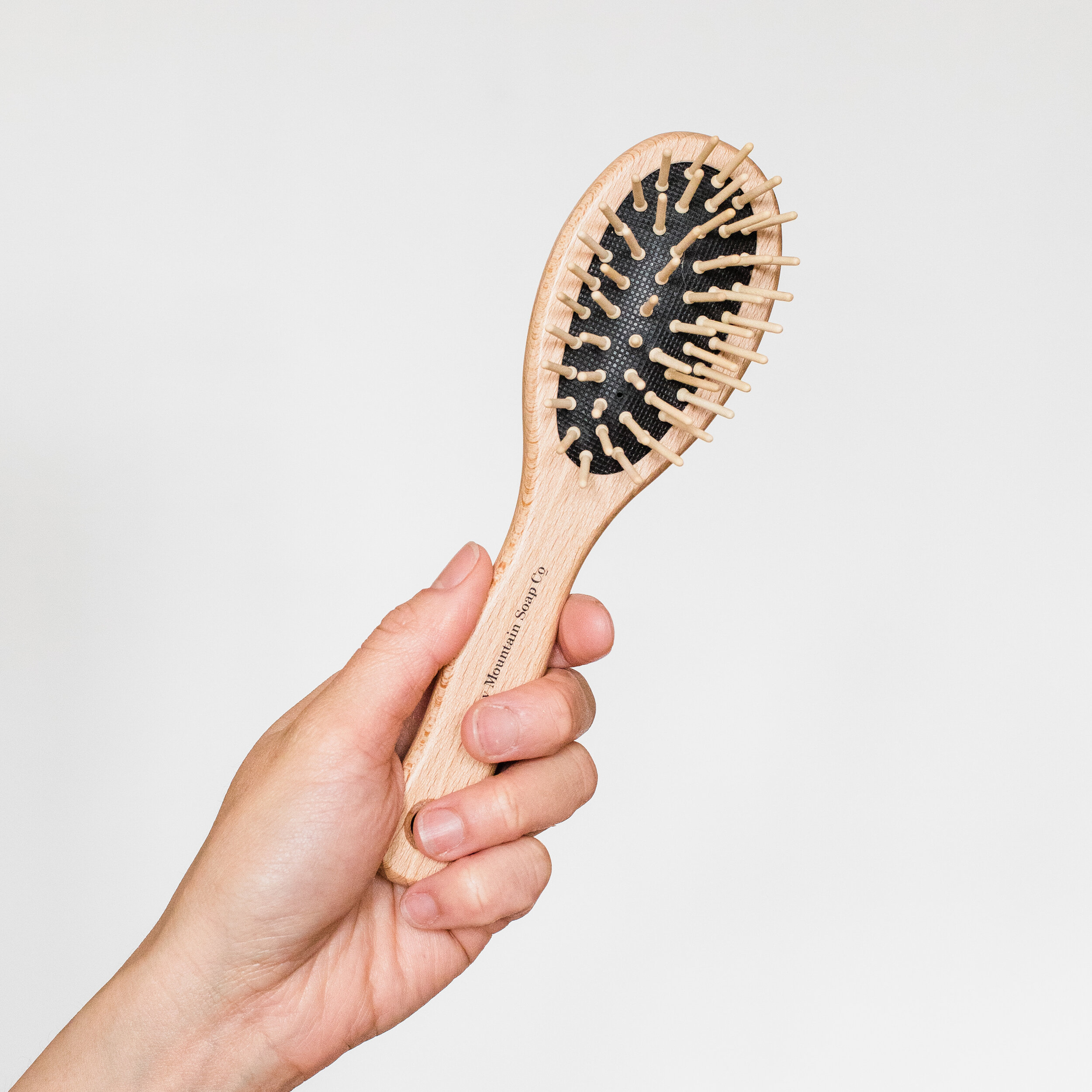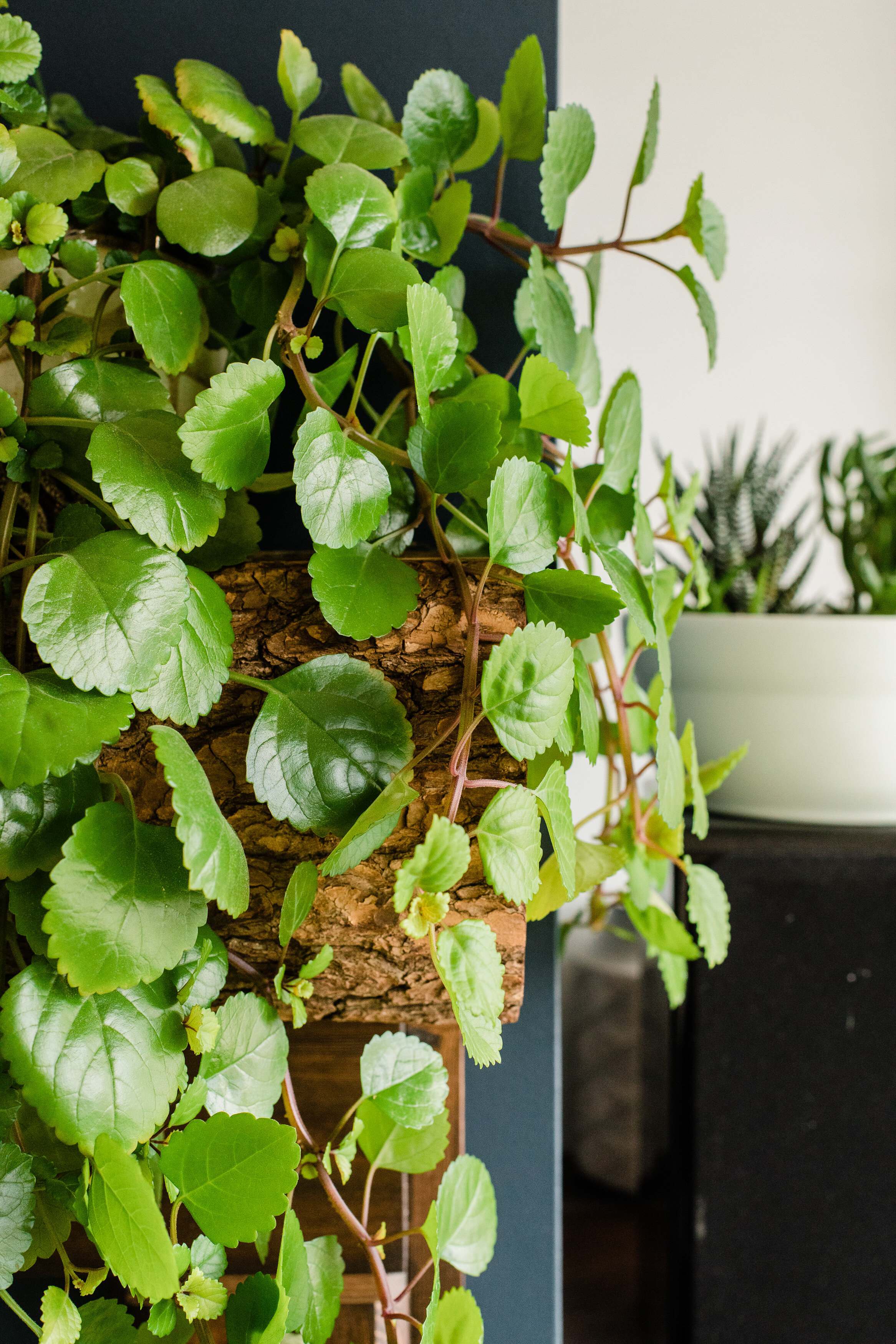10 simple swaps for a more sustainable home.
Coconut Mat, June Home Supply
Sturdy Wooden Step Stool, Becker Made
It’s April, and that means it’s Earth Month! This month, I wanted to write a few extra posts on sustainability and the outdoors in honour of our planet.
Over the years, I’ve made many lifestyle changes in try and live as sustainably as possible. I know it can seem really daunting to make significant changes to be more eco-conscious especially when it seems like the odds are against us—everything at the grocery store is covered in plastic; many restaurants still provide their food in styrofoam (which takes up one-third of the space in landfills, and less than 1% of it is recycled) when you order it to-go; and many basic necessities do not come in packaging that is biodegradable, compostable or recyclable (toothpaste tubes are one such example).
If you’ve been looking to make the switch to a more sustainable life but you don’t know where to start, below you will find some simple swaps you can make at home.
Within each tip, I have included some of the reasons (big and small) to make the switch, plus photos of what I use in my own home and links for where to shop those products. I have also provided links to other products within the same “category” (e.g., zero waste floss and tooth tablets where I write about toothpaste), even if I don’t have a personal favourite myself.
On buying nothing new
Before you go on, it is worth mentioning that the most sustainable thing you can ever do is to buy nothing new. There’s no point throwing out a perfectly good item you already own, even if it is made of plastic or other unsustainable materials, only to swap it out with a more sustainable option—if you’ve already bought it, you may as well use it ‘til the end of its life, dispose of it properly, and buy a more sustainable option afterwards. When you are looking for something new, look for what you need at second-hand, vintage & thrift stores first—if you can’t find what you’re after there, then look for something brand new. Do your research, factoring in sustainability, ethics, timelessness/longevity/functionality (you are more likely to keep something for life if you love it and it suits your needs), whether you are able to support a local business/manufacturer/entrepreneur, and your budget.
On pricing & barriers to access
I recognise that items that are more sustainably made tend to be more expensive than their cheaper, throwaway counterparts and this can be a major barrier to accessing toxin-free, zero-waste and Earth-friendly products. The fact that mass-produced or toxic items can be cheaper than something that is natural, well-made, and has fewer environmental or social consequences exposes one of many serious problems in our world today, and goes to show that corporations care more about their profits than they do about people. Everyone deserves access to toxin-free, high quality and sustainably made everyday products.
On plastic
I acknowledge that the plastic recycling issue is a complex one. Many companies have difficulty packaging their products in anything other than plastic for multiple reasons, including an increased cost of goods sold to the consumer, health/sanitary reasons, limitations to their current production/manufacturing practices, and more. It may also surprise you to learn that recycling plastic actually consumes less energy than recycling glass—this one definitely got me.
Ultimately, avoiding plastic (especially single-use plastic) and materials such as styrofoam is still critical to saving our planet, but buying cosmetics/soap/similar products that come in plastic bottles is something we will probably have to deal with for a long time until a better, more readily available solution comes along.
On animal by-products
Some of the items below contain animal by-products such as wool, honey or hair. My personal philosophy when it comes to sustainable living is that what we own should be functional, well-made, built to last, and able to decompose at the end of its life.
As an example, a broom or a duster made of synthetic or plastic hairs relies heavily on fossil fuels in its production, and those synthetic “hairs” are not recyclable or biodegradable in any way. Some dusters on the market often include single-use wipes (such as Swiffers) which are also terrible for the environment. Animal hair is a renewable, naturally produced resource. Even though I am a vegetarian, sometimes choosing products that are as natural as possible involves making purchases that include animal by-products, so long as they are ethically sourced and produced by a reputable company I trust. If ever you are in doubt, contact the company and ask about their sourcing practices. This being said, there are some things I will never purchase or consume that are made of animal by-products, such as animal furs, as this industry is notoriously under-regulated and lacks traceability & accountability in its ethical sourcing practices.
I respect that not everybody shares that view and that is totally okay! Thankfully there are more alternatives on the market now than there were 10-15 years ago—you can find so many items made from bamboo, coconut husk, coffee bean husk, and more. Post-consumer recycled plastic is also a better alternative to virgin plastic if no other material is available.
Sustainable Wooden Mop, Becker Made
Japanese Dust Pan, Shuro Hand Broom, Goat Hair Duster, June Home Supply
1. Swap plastic for natural, renewable, or reusable
It all starts from here—once you start looking for plastic you start realising how much of it we are surrounded by. The truth is, most of the plastic that has ever been made still exists today. The next time you’re buying your groceries or buying something new for your home, take a moment to consider your options. It’s worth doing your research before making a purchase—see if you can find the same item made out of a renewable, natural or biodegradable material. Materials such as wood, ceramic, and metal will be more sustainable, are likely to last longer, and usually look more beautiful, too.
Where and how you spend your hard-earned money is your vote for the kind of world we want to live in—and the kind of world we want future generations to inherit.
Silicone Bowl Cover
2. Swap plastic wrap for beeswax wraps or silicone bowl covers
Did you know that many municipalities do not actually have the ability to recycle soft plastics (e.g., plastic wrap, zip-lock bags and plastic bags)? This is plastic that will literally never go away, and even after it goes to the landfill, it often ends up in our oceans and waterways, being swallowed by unsuspecting wildlife who mistake it for their prey.
8 million metric tonnes of plastic end up in our oceans annually—that’s an overwhelming statistic, but as consumers, we can be part of the solution by refusing single-use plastics at stores and restaurants and disposing of our plastic waste thoughtfully. If you want to take it a step further, you can contact your favourite companies to ask that they switch to more sustainable packaging, or write to local, provincial & federal governments to ask for stricter policies around single-use plastics and better waste management practices.
You can swap plastic wrap for beeswax wraps (which are compostable!) or cover your food using reusable silicone covers—alternatively, store your food in reusable ceramic, glass or metal containers.
What I use
Silicone Bowl Covers
The ones I use were from Crate & Barrel and are no longer sold, but there are alternatives! Check out this list on The Best Reusable Silicone Lids from Epicurious.
I also found this set of Stretch Silicone Bowl Covers (and the same set, in Rectangle) which looks like it would actually do a much better job of being airtight and sticking over the top of bowls than my current set does.
3. Swap single-use plastic for reusable bags
Thinking about the amount of plastic we bring home with us from just one trip to the grocery store makes my head and my heart hurt. J & I make it something of a personal challenge to bring as little plastic home with us as possible, and one way in which we do this is to bring reusable produce bags as well as our reusable grocery bags. We put our fresh produce in reusable mesh bags, and items such as nuts and grains go in reusable canvas/linen bags when we shop at the bulk section. We don’t bag food such as apples, oranges and anything that’s fairly “durable” at all.
What I use
Mesh Produce Bags & Bulk Bags, Dans Le Sac
Canvas Totes/Reusable Grocery Bags
Glass Storage Jar, June Home Supply.
Bernardin Mason Jars
4. Swap pre-packaged for package-free food
Does your grocery store have a bulk section? Buying bulk can save you money (as you can buy as much or as little as you need), but it can also prevent you from using plastic—simply bring a reusable bag (as mentioned above), glass jar or plastic container to the bulk section and fill it up with what you need!
Note that filling a glass jar or plastic container will only work in stores that allow you to weigh your container prior to filling so that you are not charged for the weight of the product going in it. I hope buying in bulk versus pre-packaged becomes more common and more readily available in all stores and supermarkets.
It’s worth mentioning that buying in bulk is sustainable in more than one way—buying only as much as you need can also help you to prevent food waste, which is a major problem. One-third of all food produced is wasted, which also contributes to greenhouse gas emissions when food is thrown in landfill, rots and produces methane. 63% of all food Canadians throw away could have been eaten. The secret to wasting less is in planning ahead—J & I carve out a meal plan before every weekly grocery shop and buy only what we need for those meals in that week. We know how much food we are realistically able to consume within one week and this helps us to avoid throwing anything out. Anything that looks like it’s going to go bad gets thrown in the freezer for soups, juices, smoothies or our household favourite, banana bread; anything else goes into our compost. (Read: The Environmental Impact of Wasted Food and Sustainable Management of Food Basics).
One of our ultimate goals as a sustainable household is to grow our own food (when we no longer live in a condo!), which cuts out other environmental issues such as the greenhouse gases emitted in transporting food from the farm to the grocery store (as well as the gases emitted from driving our car to the store to pick up our food), as well as an overall reduction in water waste and the general food loss that occurs before our food even gets to the store.
What I use
Glass Storage Jars, June Home Supply
Bernardin Mason Jars + old peanut butter jars
Refillable Glass Bottle with Pump (thrifted from a friend)
Coconut Bottle Brush, Soft-Tip Bottle Brush and Wooden Dish Brush
5. Swap bottles for refillables, and sponges for sustainable brushes
Rather than buying a new plastic bottle of dish soap every month, I opt to refill a glass bottle from a 4L box that will have saved at least 5 plastic bottles from ending up in landfill/recycling over the same period of time. To keep our entire dishwashing routine sustainable, this dish soap is fragrant, dye and phosphate free to ensure no harmful chemicals enter our waterways. We also use reusable cotton scrub pads, a wooden dish brush, and eco-friendly bottle brushes. The scrub pads and dish brushes have lasted us for over a year which is more than I can say for any regular sponge (and far less bacteria-laden as they are much easier to clean).
If you want to go a step further, you can also use dishwashing soap bars which will make your entire dishwashing routine package-free! I will be trying this out once our current refill runs out—if it works for our house, we’ll make that switch for good.
What I use
4L Dish Soap Refill, The Unscented Company
Coconut Bottle Brush, Soft-Tip Bottle Brush (I can’t seem to find my exact one but there are many out there)
Cleaning cloth and amber glass bottle filled with homemade disinfectant (made of alcohol, extra-strength cleaning vinegar and water).
5. Swap chemical cleaners for homemade disinfectant
I stopped buying household cleaners at the grocery store—unfortunately, when I read the labels, most cleaners out there contain an alarming number of chemicals that are terrible for both our health and our environment. Even “green” cleaners such as Greenworks contain harmful ingredients even though they claim to be derived from natural ingredients. Funnily enough, while I was fact-checking this article, I tried to find the Greenworks All Purpose Cleaner ingredient list and the file could not be found on the Clorox website—and yes, Greenworks’ parent company is Clorox, who are a leading manufacturer of bleach. The sad truth is that many manufacturers do not have to disclose all of the information regarding toxic or harmful ingredients on their labels, and that truth applies to all industries, including the beauty and food industries.
I’ve been making homemade disinfectant for over a year, using this “recipe” from June Home Supply as a base—I don’t add any thyme or citrus but I sometimes add a few drops of a citrus or eucalyptus essential oil in there.
What I Use
Homemade Alcohol, Vinegar & Water Disinfectant
Eco-friendly Laundry Strips, Tru-Earth
Wood & Rubber Lint Brush, Redecker
6. Swap laundry detergent for eco-friendly laundry strips
This completely blew my mind when it first came to market and I’ve never looked back—no longer will we be buying plastic jugs of laundry detergent! These eco-friendly laundry strips from Tru-Earth work just like regular detergent, but it’s free of all phosphates, parabens, dyes, and chlorine bleaches, it’s hypoallergenic, readily biodegradable and it’s made in Canada. It’s like we hit the sustainability jackpot in one strip.
To keep our laundry routine as sustainable as possible, we do not use any fabric softener, we wash cold on a delicate setting, and we hang dry as much as possible. For anything that does go in the dryer (we live in the perpetual winter of the Canadian Rockies after all), I use wool dryer balls rather than dryer sheets. Dryer sheets are just another fine example of a single-use product that causes completely unnecessary waste whilst emitting toxic chemicals into the atmosphere and onto your skin. There are also extremely harmful ingredients in liquid fabric softeners such as benzyl acetate (linked to pancreatic cancer), benzyl alcohol (an upper respiratory tract irritant), ethanol (linked to central nervous system disorders), limonene (a known carcinogen) and chloroform (a neurotoxin and carcinogen), among many others (read: Greener Laundry By The Load on Scientific American).
What about regular liquid laundry detergent? You guessed it—most laundry detergent on the market is toxic, including big name North American brands like Tide. Even if you do not see it listed as an ingredient, common laundry liquids contain 1,4-dioxane, a known carcinogen. Many detergents & soaps also contain phthalates, known to negatively affect reproductive systems, endocrine systems and infant development (read: Toxic Chemicals Found in Common Scented Laundry Products, Air Fresheners). If you think about the fact humans the world over are washing their clothes, towels and bedsheets with this stuff, it means we are exposed to these chemicals all the time (as the “clean, fresh smell” is designed to stick to our fabrics)—let alone the disturbing fact that these chemicals are being washed into our waterways, affecting our wildlife and marine ecosystems (not to mention other ecosystems reliant on healthy marine ecosystems to survive), and circling right back into our drinking water. Ew.
What about stains? I use Rocky Mountain Soap’s Spotless Stain Remover Bar and honestly, I can’t believe how well it works. This 100% natural bar has been highly effective at removing anything and everything out of my clothes including makeup, dirt and more—and it’s way cleaner than using bleach.
For our daily #doghaireverywhere situation, I use a wood & rubber lint brush. I was disappointed to find that many of the regular adhesive lint rollers on the market do not have refillable options (3M Scotch-Brite, I’m looking at you), meaning you have no choice but to toss your roller in the garbage/recycling once you’re done with it (only to have to buy a new one), not to mention they are another example of a wasteful, single-use product.
What I Use
Laundry Strips, Tru-Earth
Wool Dryer Balls, Tru-Earth
Wood & Rubber Lint Brush, Redecker
Spotless Stain Remover Bar, Rocky Mountain Soap
Bamboo Toothbrush, Brush With Bamboo
Wooden Hair Brush, Rocky Mountain Soap
7. Swap your plastic toothbrush for bamboo
Swapping your plastic toothbrush for a bamboo one is one of the simplest swaps there is! I am so, so happy with my bamboo toothbrush—it looks better than the multi-coloured monstrosities out there, and I won’t have to think about the fact that my toothbrush will be on planet Earth for longer than I will be alive. Yay!
Brushing with bamboo is not the only way you can be more sustainable with your toothbrushing routine—you can also switch out your regular toothpaste for toothpaste tablets, as well as using zero-waste floss. I will admit that the toothpaste tablets take a bit of getting used to and might take a few more goes with a few different brands before J & I can really get on board.
What I Use
8. Swap your plastic hair brush for wood
This one’s pretty straightforward—if you’re going to brush your teeth with bamboo, you may as well start brushing your hair with wood. If you own a plastic hairbrush and you have thick, wavy hair like me, you may be frustrated at the inferior job your current hairbrush may be doing (not to mention you might be sick of the plastic bristles tearing and the brush breaking after only a few months).
I have a wooden Bass natural hair brush that has lasted for over 2 years and is still going strong. There are so many lovely wooden hair brush options out there these days, such as ones from brands like Rocky Mountain Soap, Iris Hantverk and Redecker—and when they look so much nicer than a plastic hairbrush, why wouldn’t you make the switch?
While we’re here, we may as well talk about how amazing it is that you can wash your hair with package-free shampoo & conditioner bars (available from many brands) and you can tie your hair with TerraTies, made of natural rubber and organic cotton. Traditional hair-ties are made of polyester and do not break down in the environment.
What I Use
Natural Bristle Brush, Bass Brushes
Wild Kindness Shampoo in Rosemary Mint, Rocky Mountain Soap
Wild Kindness Conditioner in Orange & Jasmine, Rocky Mountain Soap
Bamboo Safety Razor, Olivina Men
9. Swap your plastic razor with a sustainable safety razor
This is another simple swap—ditch the plastic razors for a beautiful safety razor! Along with my bamboo toothbrush and wooden hairbrush, this is another sustainable swap I have been in love with, not just because it is more eco-friendly, but also because it tends to function better, and it looks beautiful.
An estimate from the Environmental Protection Agency says that over two billion plastic razors and cartridges are discarded annually in the U.S. alone. Safety razors are just another way you can be more Earth-friendly in your day-to-day routine.
Since switching, I have never nicked myself with my safety razor and I find I get a much smoother shave without my skin getting irritated.
My safety razor is by Olivina Men (because that’s what I found at the time, and there’s no reason a woman can’t use this razor either!), but you can also shop this safety razor by Rockwell Razor, and this safety razor by Well Kept, a Vancouver-based, women-led business.
What I Use
Bamboo Safety Razor, Olivina Men
Shave Bar, Rocky Mountain Soap
Natural Bar Soap, Rocky Mountain Soap
10. Swap toxic soap for natural bar & liquid soap
Last but not least—there’s no point getting clean using products that are toxic. Just like what I shared about toxins in common laundry liquids, the same applies for hand soaps, body washes, shampoo and so on. When looking for natural, toxin-free soap, look for soaps that do not contain parabens, phthalates, SLS, SLES, and triclosan (just to name a few). Unfortunately, these toxic ingredients are commonly found in most soaps on the market and there are no regulations in the United States & Canada that prevent these ingredients from being used in everyday consumer products. These ingredients are also completely unnecessary when it comes to making an effective soap.
In the kitchen, I use Rocky Mountain Soap’s Antibacterial Kitchen Hand Wash Refill, and I pour it into a glass bottle. In the bathroom, I use their Pumpkin Bar Soap which is highly moisturizing and great for sensitive skin. Full disclosure: I am a photographer & graphic designer at Rocky, but I was a fan of their products even before I started working there.
In our current times living through the COVID-19 pandemic, many of us are also using hand sanitizer on a regular basis. Most of these hand sanitizers are nasty—but they don’t have to be. I have sensitive skin and have had eczema on & off since I was a child, and harsh sanitizers, soaps and lotions cause me to have major flare-ups on my hands. Rocky Mountain Soap’s all-natural Nomad Hand Sanitizer is the only one I can use; it smells lovely, is highly moisturising, and a little, pea-sized amount goes a very long way.
Also, when it comes to shopping at Rocky Mountain Soap—they have a Returnable program that allows you to return your empty 1L bottles for them to sanitize, refill and resell, further helping to close the loop.
What I Use
Antibacterial Kitchen Hand Wash Refill, Rocky Mountain Soap
Pumpkin Bar Soap, Rocky Mountain Soap (I sometimes use this to wash my face, too!)
Nomad Hand Sanitizer in Jasmine, Rocky Mountain Soap
Wool Blanket & Large Hamper Basket, June Home Supply
I hope this post helps you find more sustainable options for your home and your day-to-day. If you’ve made any changes to your lifestyle in order to be more sustainable, what are they? Did you learn anything new from this post? Let me know in the comments!
Sustainable Online Stores/Resources
Online Shops:
June Home Supply (Winnipeg, MB)
Sustain Eco Store (Huntsville, Ontario)
Green Boheme (Nanaimo, BC)
Ample & Good (Ontario, CA)
Rocky Mountain Soap (Canmore, AB)
Package Free Shop (United States)
Flora & Fauna (Australia)
Biome Eco Stores (Australia)
Blogs:
Articles:
Plastic Waste: Plastic in the Ocean, The Great Pacific Garbage Patch and Ending the Use of Harmful and Unnecessary Single-Use Plastics and Fighting For Trash Free Seas
Food Waste: The Environmental Impact of Wasted Food, Global Food Waste and its Environmental Impact Sustainable Management of Food Basics
Toxins: Toxic Chemicals Found In Common Scented Laundry Products, Air Fresheners, Saving Face: How Safe Are Cosmetics and Body Care Products?, Choosing Chemical-Free Hand Soap: The Top 6 Ingredients To Avoid and Are Everyday Consumer Products Making People Sick?
Podcasts:
